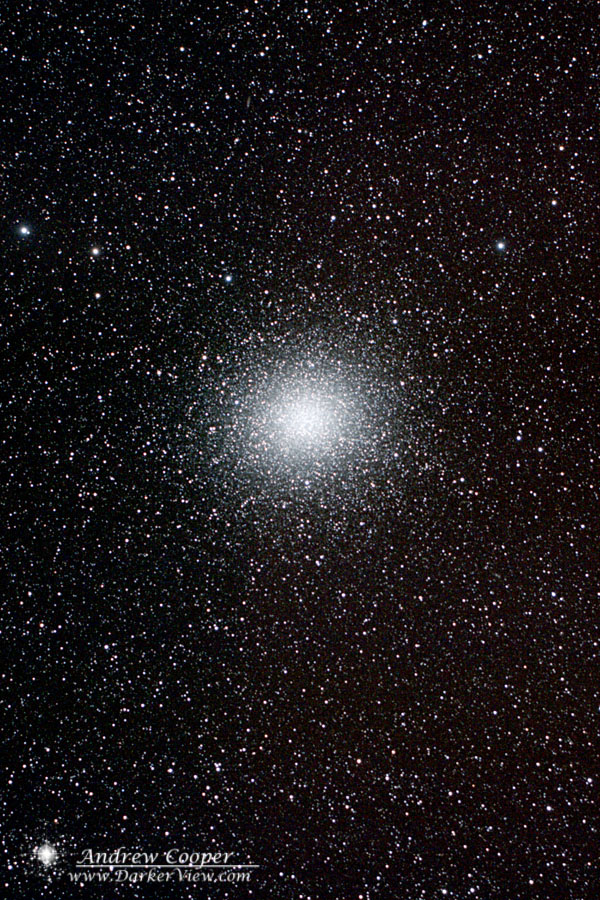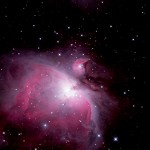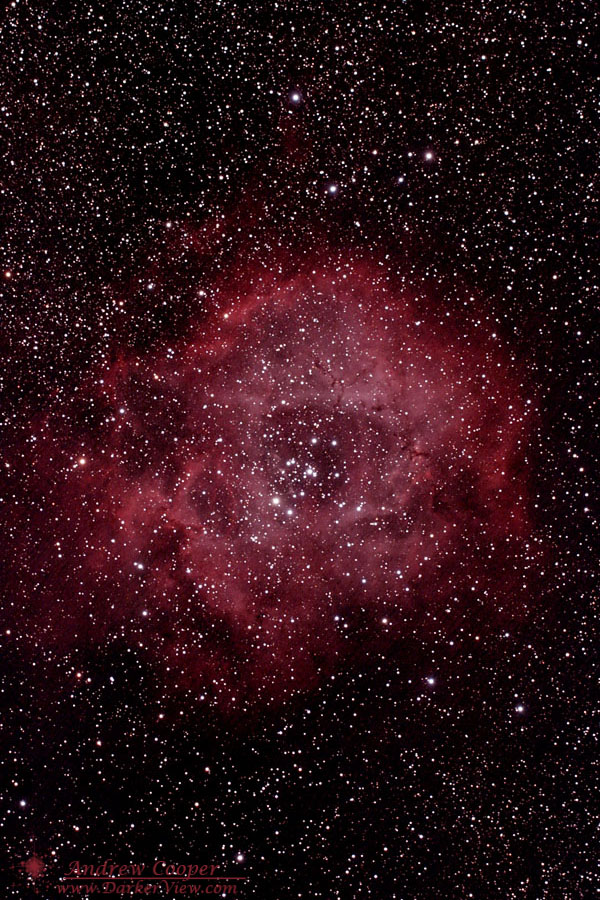
Tag: 20Da
Postcard from the Universe – Galactic Center
Postcard from the Universe – The Inkblot
A frame filled with stars beyond counting while looking into a small part of the core of our Milky Way galaxy. This area of the sky is endlessly entrancing as you see the immensity of our galaxy demonstrated in a very dramatic fashion.
At the center is the small star cluster NGC6520 and the dark nebula B86. These two create one of my favorite showpiece views when viewing from a dark site with a large telescope. Even many people who have done a fair amount of observing have never looked at a dark nebula before. A great object to select when other telescopes are showing the usual stuff.
The photo is the sum of five separate five minute exposures with the Canon 20Da and a TV-76mm telescope. Taken from my driveway in Waikoloa the image is about two degrees (four times the width of the full Moon) from top to bottom.

Postcard from the Universe – Double Cluster
Postcard from the Universe – Rosette
A Dummy Battery Adapter for the Canon 20Da
Another quick project to solve a little equipment issue. I realized I had a problem the morning before I was planning to spend a night shooting astrophotos up on the mountain. The batteries for my 20Da are old and do not hold a charge, no way I was going to be able to use the camera through the night.

I have the AC power supply for the 20Da, this is what I have been using for some time now. Shooting astrophotos in the driveway allows access to AC power. For field use this will not do, I need to operate fully from battery power. The camera batteries that I do have for the camera are now at least six years old, and do not hold enough charge to last.
Without AC power available I needed something that could plug into one of my 12V field battery packs. I really did not want to cut up the existing AC power supply to create a version to be used with an external battery. Plus, Canon used odd, proprietary connectors on the supply. (I really hate it when they do that!) I can not even use parts of the AC supply without modification.
With only a few hours available I came up with a plan. A little digging showed I had all of the needed components on-hand. Off to the work bench!
Continue reading “A Dummy Battery Adapter for the Canon 20Da”
Canon Introduces the 60Da
Most of my astrophotos are taken with my venerable Canon 20Da, a special version of the EOS 20D that was produced for astrophotography. Normal DSLR cameras work quite well for astrophotography, with one major drawback… The filter placed in front of the sensor blocks much of the Hα light emitted by many nebulae.

Specifically for astrophotography, Canon produced a special version of the 20D with a re-designed filter that allowed Hα light to reach the sensor, the Canon 20Da. The camera also featured on-screen focusing, a feature now found on most DLSR cameras, but unusual back in 2005.
The 20Da was discontinued in 2006. Astrophotographers wanting a DSLR camera with a filter that admits Hα light must buy a standard camera and remove the filter, or have it modified by specialist that offers a conversion service.



